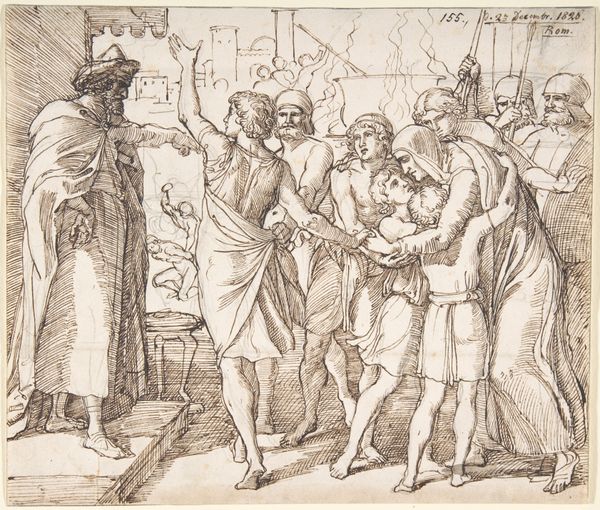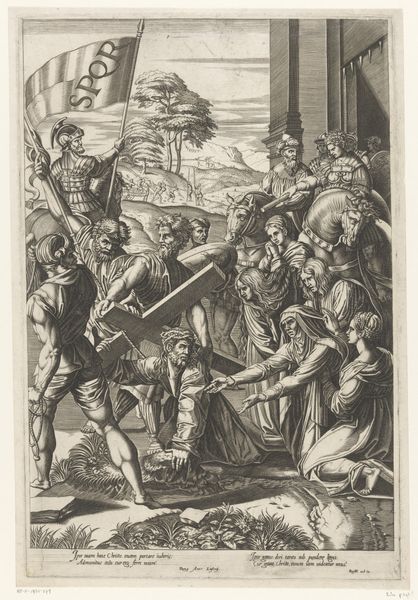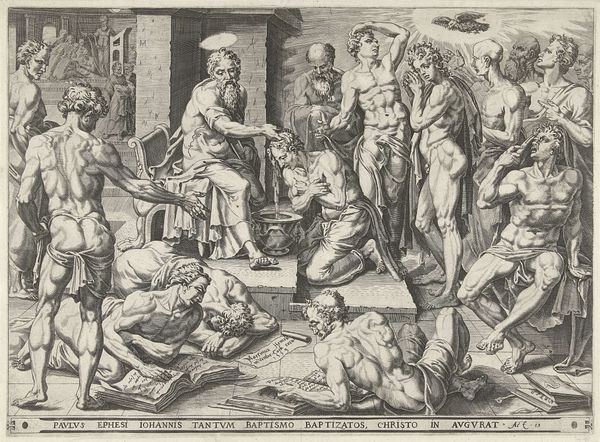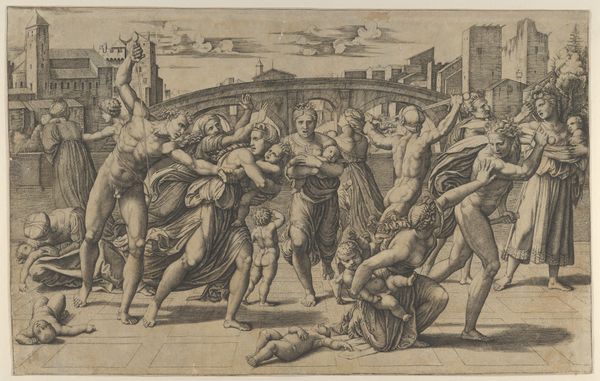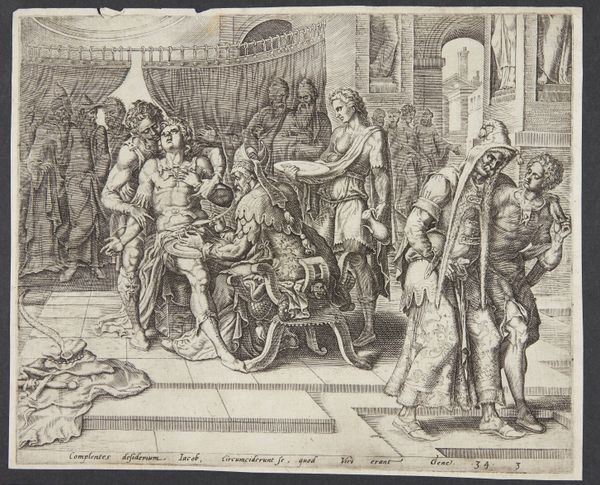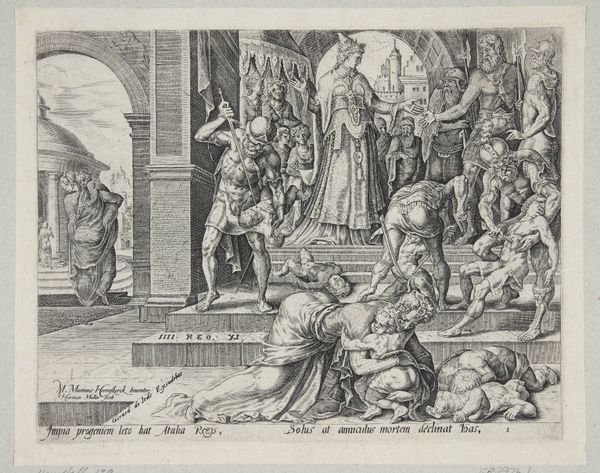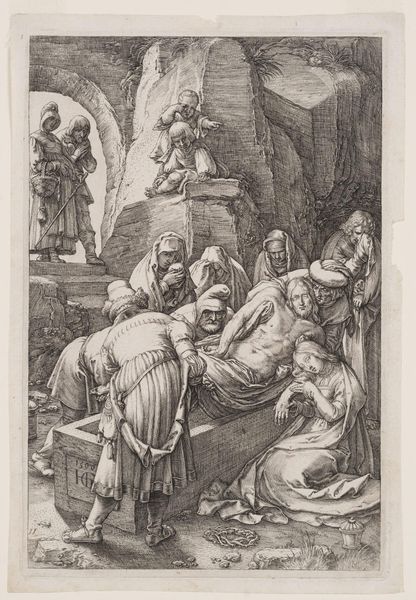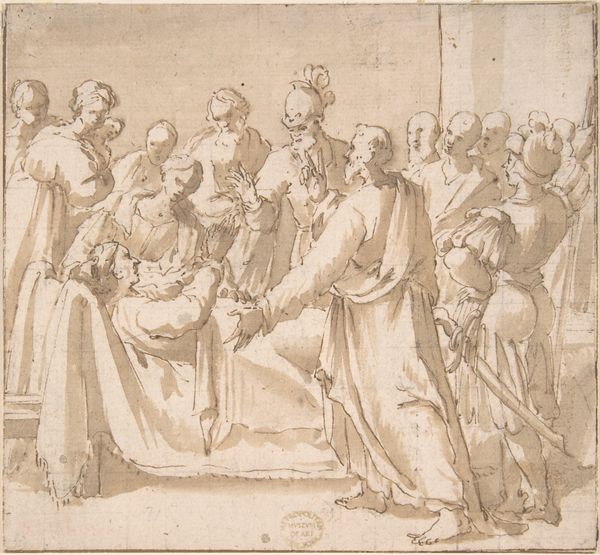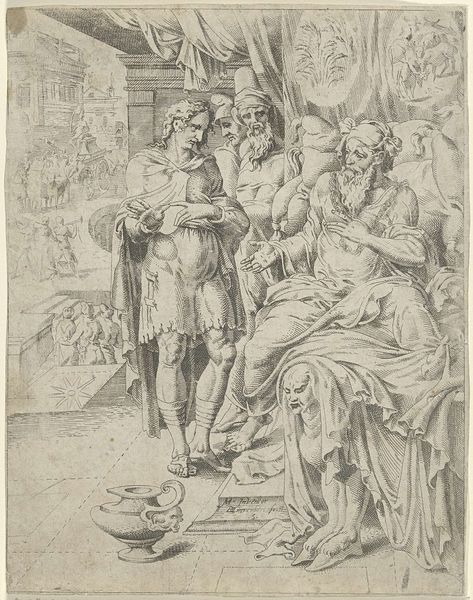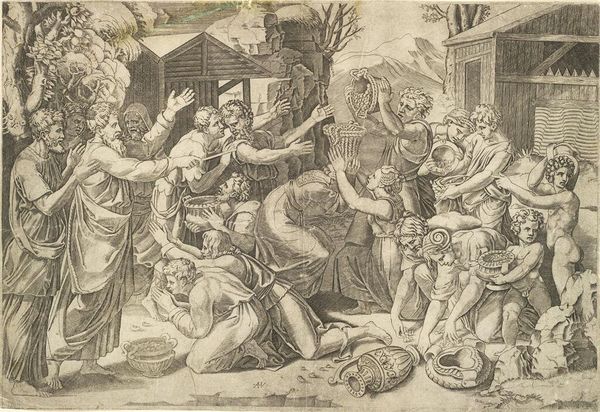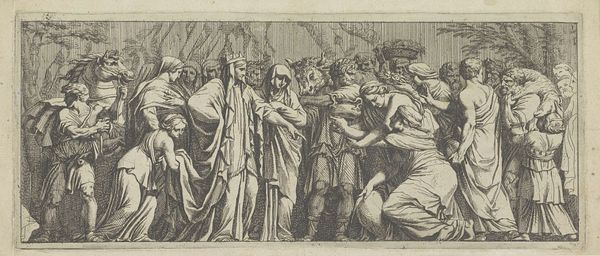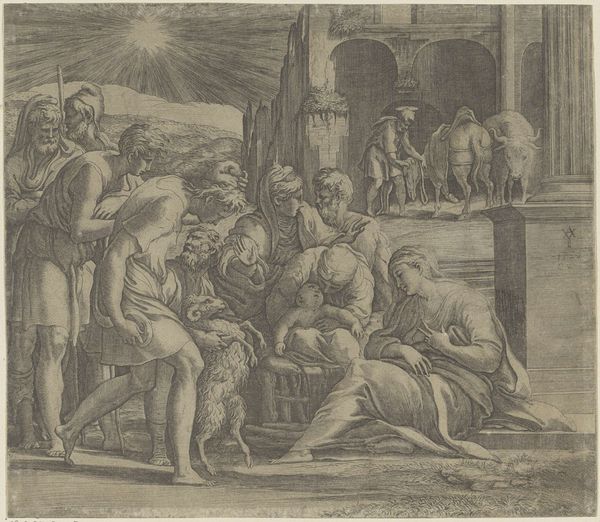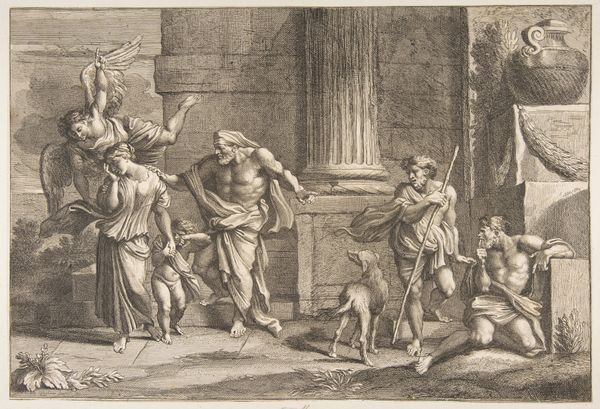
drawing, print
#
drawing
#
narrative-art
# print
#
figuration
#
11_renaissance
#
italian-renaissance
Dimensions: 7 1/8 x 13 3/8 in. (18.1 x 33.9 cm)
Copyright: Public Domain
Curator: Pieter Aertsen, likely sometime between 1520 and 1575, rendered this drawing-like print entitled, "Raguel's Reception of Tobias at Ecbatana." It resides today at the Metropolitan Museum of Art. Editor: My immediate impression is one of complex relationships and societal expectations rendered in austere tones, a tapestry of welcomes but with sorrow subtly interwoven. The grayscale palette makes me wonder about how these figures would have been viewed in the cultural landscape of its time. Curator: Indeed, Aertsen, known for his genre scenes, delves into the biblical narrative from the Book of Tobit, where familial bonds are tested and divine intervention occurs. It’s about more than a reunion; it's about the fulfillment of prophecy. Look closely, and you might discern the symbolic weight of duty in their posture and gaze. Editor: I find myself drawn to the woman seated with her face buried in her hands – such vulnerability, such visible suffering, set in contrast to the embrace. I’m keen to learn how her story challenges notions of female autonomy during the Renaissance, when narratives were predominantly patriarchal. Curator: Excellent point. This visual encoding, if you will, shows how suffering plays a crucial symbolic role. The act of burying her face signifies shame and anguish. There are multiple symbolic frameworks, including her marriage to seven men who were all murdered before their marriage was consummated. But notice too the prominence of the men embracing and consider how such iconography might subtly echo contemporary ideas about familial structure and religious obligation? Editor: Exactly! It demands that we investigate who is centered in this narrative and who remains on the margins. This print speaks volumes about the intersections of power, piety, and personal tragedy. If we situate her in contemporary dialogue around consent and agency, it becomes even more poignant, doesn’t it? It forces us to address what visual responsibility demands when interpreting historical representation. Curator: I couldn't agree more, though I find that a focus on the visual language itself reveals further subtleties that touch on wider philosophical reflections beyond our immediate concerns about political contexts. For example, is the symmetry meant to imply resolution and spiritual destiny fulfilled through reconciliation and perhaps forgiveness? It’s not always as stark as simple oppression. Editor: Fair point. Ultimately, our dialogue enriches the viewers experience. We bridge both theory and faith as we weave our interpretations!
Comments
No comments
Be the first to comment and join the conversation on the ultimate creative platform.
